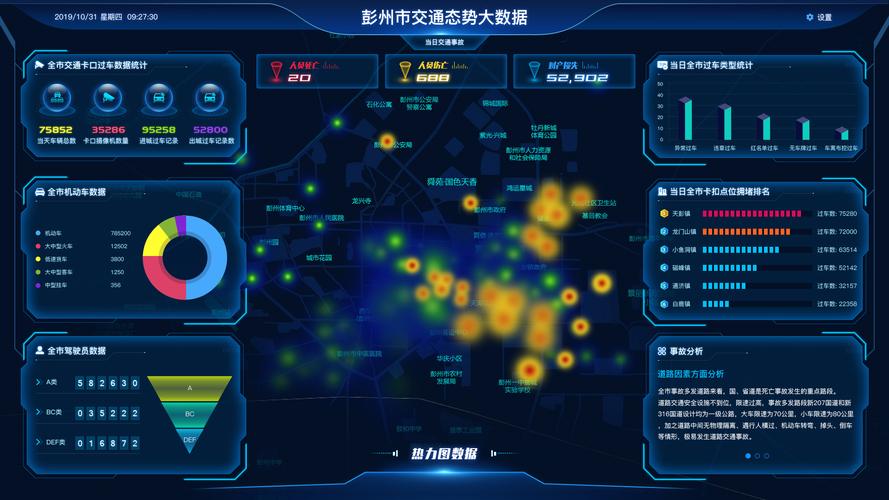旅游大数据心得体会
Title: Enhancing Tourism Insights Through Data Modeling: Visualizing the Impact
In the dynamic landscape of tourism, data modeling plays a pivotal role in unraveling insights and shaping strategies. Leveraging big data, sophisticated algorithms, and visualization techniques, tourism professionals can discern patterns, predict trends, and optimize decisionmaking processes. Let's delve into the efficacy of data modeling in the tourism industry and explore the impact through compelling visualizations.
Understanding Tourism Data Modeling
Tourism data modeling involves the systematic analysis of vast datasets encompassing various facets such as traveler demographics, preferences, behaviors, booking patterns, socioeconomic factors, and geographic information. By employing statistical techniques, machine learning algorithms, and predictive analytics, this modeling aims to extract actionable insights to drive innovation and competitiveness within the tourism sector.
Key Components of Tourism Data Modeling
1.
Data Collection and Preprocessing:
Aggregating heterogeneous datasets from diverse sources including booking platforms, social media, surveys, and government databases.
Cleaning, transforming, and standardizing data to ensure accuracy and consistency, thereby facilitating meaningful analysis.
2.
Descriptive Analytics:
Examining historical data to identify patterns, trends, and correlations, shedding light on past tourism dynamics.
Utilizing techniques such as clustering to segment tourists based on shared characteristics and behaviors.
3.
Predictive Analytics:
Employing machine learning algorithms like regression, decision trees, and neural networks to forecast future trends and demand.
Predicting visitor influx, accommodation occupancy rates, and popular tourist attractions during peak seasons.
4.
Prescriptive Analytics:
Recommending optimal strategies and interventions based on predictive insights to enhance tourism experiences and mitigate challenges.
Suggesting personalized tour packages, pricing strategies, and marketing campaigns tailored to specific customer segments.
Visualizing Tourism Insights
1. Geographic Heatmaps:
Illustrating visitor distribution and hotspots across regions, cities, and attractions.
Facilitating destination planning, resource allocation, and infrastructure development.
2. Demand Forecasting Charts:
Graphically depicting anticipated tourism demand over time periods and geographical areas.
Guiding capacity planning, inventory management, and pricing strategies for tourism businesses.
3. Sentiment Analysis Word Clouds:
Visualizing sentiments expressed in online reviews and social media posts.
Informing reputation management, service improvements, and marketing campaigns.
4. Network Graphs:
Mapping interconnections between tourist destinations, transportation routes, and accommodation facilities.
Enhancing route optimization, accessibility, and connectivity within tourism ecosystems.
5. Customer Segmentation Plots:
Segmenting tourists based on demographic attributes, preferences, and spending behaviors.
Tailoring marketing messages, product offerings, and service experiences to distinct customer segments.
Guiding Recommendations
1.
Invest in Data Infrastructure:
Establish robust data collection mechanisms and analytics platforms to capture and process tourism data effectively.
2.
Embrace Advanced Analytics Techniques:

Leverage predictive and prescriptive analytics to anticipate market shifts and proactively address emerging challenges.
3.
Foster Collaboration and Knowledge Sharing:
Encourage partnerships between tourism stakeholders, data scientists, and researchers to exchange insights and best practices.
4.
Prioritize Data Privacy and Security:
Safeguard sensitive tourist information through stringent data privacy measures and compliance with regulatory standards.
5.
Continuously Evaluate and Iterate:
Regularly assess the efficacy of data models and visualization tools to adapt to evolving tourism dynamics and stakeholder needs.
Conclusion
In the realm of tourism, data modeling serves as a catalyst for innovation, competitiveness, and sustainable growth. By harnessing the power of big data and visualization techniques, stakeholders can gain deeper insights, make informed decisions, and create enriching experiences for travelers worldwide. Embracing a datadriven approach is not merely a trend but a strategic imperative for shaping the future of tourism in a rapidly evolving global landscape.
标签: 旅游大数据报告 旅游大数据的概念 旅游大数据 旅游大数据心得体会 旅游大数据如何提升景区运营
相关文章
-
景顺成长,探索中国城市化进程中的绿色发展之路详细阅读

在21世纪的今天,城市化已成为全球范围内不可逆转的趋势,中国,作为世界上人口最多的国家,其城市化进程尤为引人注目,随着经济的快速发展,城市化带来的问题...
2025-10-01 198
-
深度解析,股票000777中核科技的投资价值与未来展望详细阅读

在当今的投资市场中,股票投资无疑是一个热门话题,而在众多股票中,股票代码为000777的中核科技因其独特的行业地位和发展潜力,吸引了众多投资者的目光,...
2025-09-30 240
-
深圳证券交易所交易规则,投资市场的指南针详细阅读

亲爱的读者,想象一下,你正站在一个繁忙的十字路口,四周是熙熙攘攘的人群和川流不息的车辆,每个人都在按照交通规则行事,红灯停,绿灯行,黄灯亮起时,大家会...
2025-09-30 200
-
基金202005,揭秘投资背后的逻辑与策略详细阅读

在投资的世界里,基金是一种备受瞩目的投资工具,它以其多样化的投资组合、专业的管理团队和相对稳定的收益吸引了众多投资者的目光,我们将深入探讨基金2020...
2025-09-30 193
-
探索中国平安行销,策略、实践与未来趋势详细阅读

在当今竞争激烈的市场环境中,行销策略对于企业的成功至关重要,中国平安,作为中国领先的金融服务集团,其行销策略不仅在国内市场上取得了显著成效,也为全球行...
2025-09-29 200
-
深入解析数码视讯股票,投资价值与市场前景详细阅读

在当今数字化时代,数码视讯行业作为信息技术领域的重要组成部分,正逐渐成为投资者关注的焦点,本文将深入探讨数码视讯股票的投资价值与市场前景,帮助投资者更...
2025-09-29 241
-
悦康药业,创新与责任并重,引领健康未来详细阅读

在当今这个快节奏、高压力的社会中,健康成为了人们越来越关注的话题,而在医药行业中,有这样一家企业,它以创新为驱动,以责任为担当,致力于提供高质量的药品...
2025-09-29 192
-
深度解析,定向增发股票背后的资本游戏与投资策略详细阅读

在资本市场的棋盘上,股票的每一次变动都牵动着投资者的神经,定向增发作为一种特殊的融资方式,因其能够为上市公司带来资金的同时,也为投资者提供了新的投资机...
2025-09-29 196
